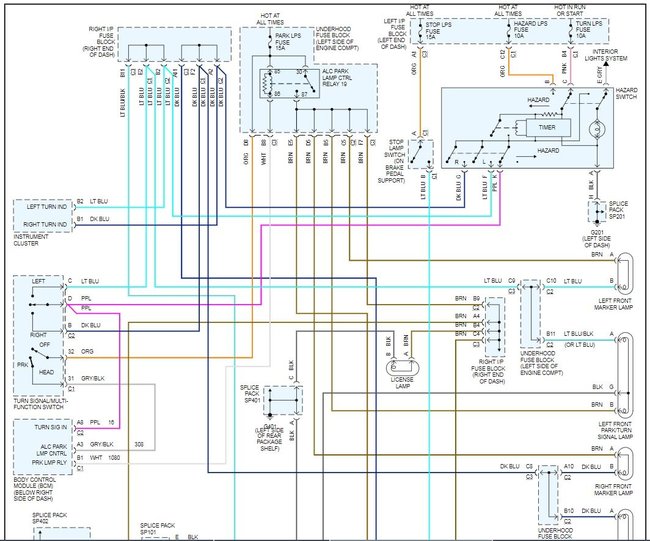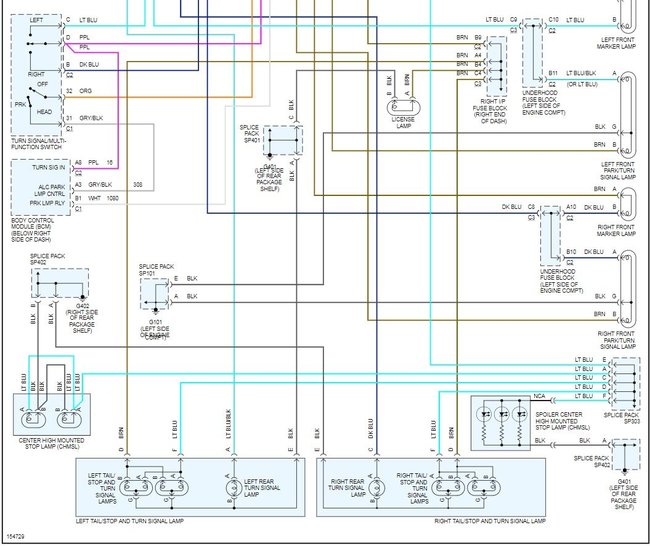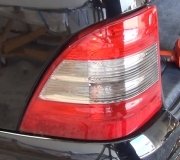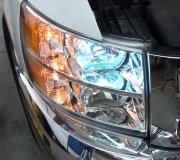I have seen even professional mechanics chase switch, blinker, module, wiring and bulb problems for both turn signal and headlight issues only to eventually find they have incorrectly installed a bayonet bulb backwards. Even though the bulb immediately looks like it can be installed either way, it is polarized.
Bayonet bulbs have offset pins on the sides of the bulb but the two power contacts on the bottom are symmetrical. Carefully look at the sides of the bulb and you will see the locking pins are at slightly different heights.
These bulbs can be easily installed into the socket one hundred degrees out of position or reversed with a little force, making the elements of the lamp connect to the wrong circuit, (turn to run and the run to turn), for front the same condition can apply).
Carefully look at the bulb filament and you will see two separate filaments inside the bulb. The energy drawn for a turn/brake filament is different than the tail-light on filament. Reversal will definitely cause unusual blinking situation.
Typically, slow flash = bulb out or not connected either front or rear, and a short will make your blinker go fast.
Aside from having the correct bulb, having it installed correctly, when you inspect the bulb look inside and be sure the filaments are not touching one another where one filament has broken, fallen and welded itself to the other filament creating a short.
Lastly on turn signals: Be certain the common wire for both filaments, or the ground has a solid connection (zero ohms) back to the battery common connection via a real ground wire and not the car body. Do not rely on the car body for this connection.
If the other bulbs glow dimly during a turn signal or braking event the bulb in question is getting its common or ground connection through the combination of the other bulbs, refer to previous sentence.
Re Headlamps:
I cannot find a current reference to a little known feature that was introduced into automobile headlamps known as a "safety glow" feature.
This was a heavy duty low intensity filament along with the standard filament that would glow at a very reduced rate along with the main filament is sealed beam bulbs for long, long life in the headlamp. However, albeit dimly still giving the vehicle two lights preventing oncoming traffic from mistaking the one light for a bicycle or other similary narrow vehicle making the oncoming driver incorrectly guess the distance and crashing into a dark side of the vehicle, as this beam provided some light.
Many interpreted this soft glowing headlamp as a bad connector or wiring problem when it was turned on and the main beam filament was actually burned out as the lamp seemed to glow properly when switched to high, but the low beam just was not bright enough when in fact they had a failed main beam bulb. Ohmmeter checks don't reliably find this problem unless you are experienced and have a meter that can reliably read and resolve readings in the less than the five-to-ten-ohm range. Hours are lost tracing this fault when simply replacing the bulb fixes this problem.
Tuesday, December 20th, 2022 AT 8:23 PM







